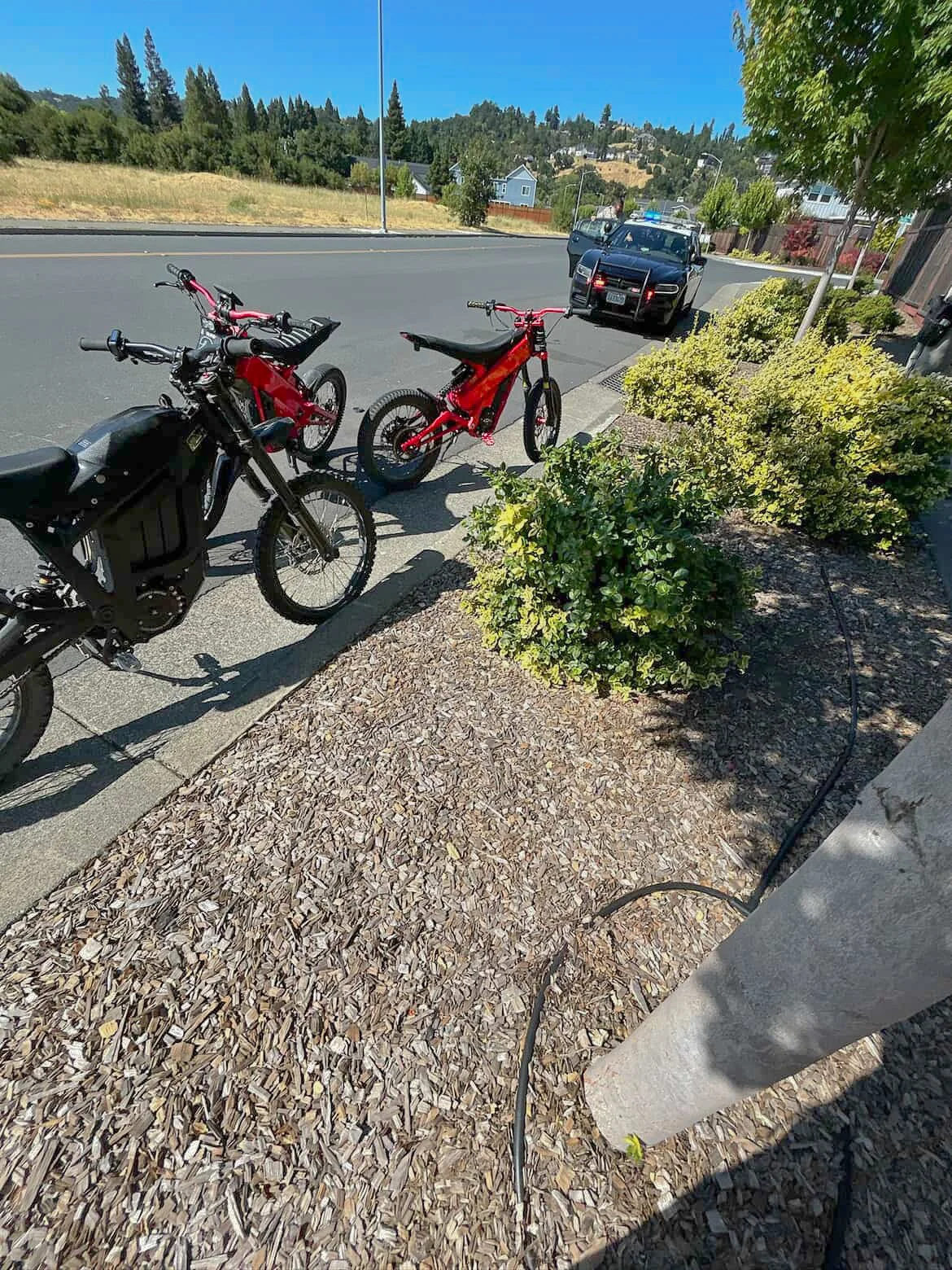California Highway Patrol starts to break down on e-bikes
E-Bikes pulled over by the police (The Puma Prensa / Blake Soiland)
By Blake Soiland, Staff Writer
Recently, e-bikes have been gaining traction and rising in popularity with their easy riding and high speeds. With all that popularity, though, comes consequences. Teenagers on e-bikes will frequently perform dangerous stunts, including “rideouts,” where teenagers form a group and select a route to ride. When these rideouts take place, police tend to prey on the group of bikers because they are often doing dangerous stunts.
Every year, new e-bikes get announced that are stronger, faster, and have more power. I own an e-bike myself, and although it is exciting, the dangers should not be ignored. For example, out of all the 911 calls for bike accidents in California, 71% of them involved e-bikes. The more e-bikes that come out, the more accidents that happen.
In December of 2002, the United States created their first e-bike laws. These laws stated that a qualifying electric bicycle needed to have fully operable pedals, an electric motor of less than 750 watts, and a maximum motor-assisted speed of less than 20 mph. Since this bill has been put in place, many states have since made their own regulations, often based on the “three-class” system.
On January 1, 2017, California passed the Assembly Bill 1094 that classified e-bikes into three categories, class one, generally allowing them to be treated as regular bicycles without the need for a license or registration. Class two, throttle assisted with a motor that can move the e-bike independently up to 20 mph. Class three, speed pedal assisted e-bikes that stop providing motor power at 28 mph and have a speedometer. However, with this bill came an age restriction. Operators must be 16 years of age or older, and they must wear a helmet. This law also specified speed and motor assistance limitations for each class, differing between pedal-assist and throttle-powered models, and placed e-bike riders under the same traffic rules as standard cyclists. Class three e-bikes also need speedometers and are not permitted to carry passengers.
California’s newest bill on e-bikes will be enacted on January 1, 2026. This bill states that all e-bike batteries sold need to be certified by an accredited laboratory to meet safety standards. This also prohibits selling or leasing e-bikes, devices, or batteries that are not tested and certified to these standards. Additional class one and class three e-bikes are clarified to be pedal assist only, while class two e-bikes can have throttles but are limited to 20 mph.
e-bike laws have changed a lot over the years in the United States, and they will continue to change in the future. Because of these laws, e-bike riders have been affected by police a lot more than you might realize. For some people, e-bikes are their rides to work or their main form of transportation, and with police getting stricter about them, this is completely restricting what might be their only form of transport. This crack down can also negatively affect individuals’ opinions on police officers. Teenagers often claim on social media sites, such as TikTok, that instead of fighting crime, police officers are wrongly targeting kids for illegal use of their bikes.
For some kids, if they simply ride their e-bikes to school, police might stop them and compromise their bike, even if they weren’t showcasing any concerning behavior. Some police officers you pass may not bat an eye, but others may care, and it really depends on the individual police officer and what exactly you are doing. Bias has been apparent in many cases, but nine times out of ten if a police officer pulls somebody over on an e-bike they were most likely doing something illegal without knowing.
Not all teenagers that have e-bikes are irresponsible, however it is true that these bikes can be attributed to a multitude of recent, tragic deaths caused by accidents. Studies show that from 2017 to 2022, when e-bikes began to be recognized as serious vehicles, death rates rose by nearly 21% with 233 total deaths from e-bikes alone. 104 of those deaths were from reckless driving.
This goes to show how dangerous e-bikes can be, but they also have tons of use in our daily life. Public opinion on e-bikes is overwhelmingly positive, and many say that they are fun, accessible, and a positive force for getting more people outside. Half of today's teenagers spend 4+ hours on screens a day, while The American Academy of Pediatrics recommends no more than 2 hours a day for highschoolers.
A large number of individuals consider e-bikes a key part in future transportation plans; e-bikes offer a way to bypass traffic, find parking, and make commutes that make sense to ride an e-bike rather than drive a car. Although e-bikes have their dangers, wrongful bias can still be present. Safety on e-bikes is the key to prevent these biases.

